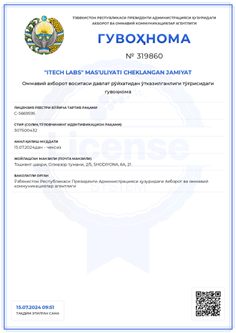Improving methods for optimizing the dynamic parameters of vibrating conveyors
Keywords:
Vibratory conveyor; dynamic parameters; optimization methods; resonance control; modal analysis; energy efficiency; finite element modeling; Uzbekistan industry; machine dynamics; vibration monitoringAbstract
Vibratory conveyors are widely used in industries ranging from mining and metallurgy to agriculture, construction materials, and food processing, owing to their ability to efficiently transport bulk solids over short and medium distances with relatively low energy consumption and minimal mechanical wear. Despite their broad application, the reliable and energy-efficient operation of vibratory conveyors remains a significant engineering challenge, as their performance is strongly dependent on dynamic parameters such as natural frequencies, amplitudes, vibration modes, damping ratios, and resonance effects. In Uzbekistan, where industries are increasingly modernizing their production and material-handling systems in line with global technological standards, the optimization of vibratory conveyor parameters has particular relevance, since production enterprises often rely on equipment imported from abroad, which may not be fully adapted to local working conditions and resource constraints. This article aims to advance methods of improving the optimization of dynamic parameters of vibratory conveyors by integrating theoretical modeling, experimental validation, and algorithmic optimization strategies in a unified framework that ensures maximum reliability, efficiency, and adaptability of such conveyors under diverse operational scenarios. The research investigates how computational techniques such as finite element modeling and modal analysis can be adapted and improved to provide accurate predictions of conveyor dynamics, while experimental vibration monitoring provides validation of those models in real-time conditions. Furthermore, the study emphasizes the role of modern optimization algorithms, including genetic algorithms, particle swarm optimization, and hybrid machine learning-based methods, in refining parameter selection and enabling adaptive control of vibratory conveyors. By contextualizing this research within the industrial modernization agenda of Uzbekistan, the paper highlights both the practical significance of enhanced vibratory conveyor optimization and the broader contribution to the field of materials handling engineering. The results demonstrate that improved methods of optimization not only reduce energy consumption and mechanical stress on structural components but also extend equipment lifespan, minimize downtime, and support sustainable industrial development. This study contributes to bridging the gap between theoretical vibration mechanics and practical engineering applications, offering new insights and practical recommendations for industries in Uzbekistan and globally.
Downloads
References
Czubak, P., & Gajowy, M. (2022). Influence of selected physical parameters on vibroinsulation of base-exited vibratory conveyors. Open Engineering, 12(1), 337–348. https://doi.org/10.1515/eng-2022-0033
Michalczyk, J., & Gajowy, M. (2023). Operational properties of vibratory conveyors of the antiresonance type. Archives of Mining Sciences, 68(2), 421–439. https://doi.org/10.24425/122449
Stoicovici, D. (2021). Movement regimes and determining the main parameters of oscillating and vibrating conveyors. In Advances in Mechanisms Design (pp. 91–106). Springer. https://doi.org/10.1007/978-3-030-57418-5_6
Kozhushko, G. G., Lukashuk, O. A., & Roscheva, T. A. (2019). Optimization of high-power belt conveyor parameters. In Advances in Design, Simulation and Manufacturing II (pp. 791–800). Springer. https://doi.org/10.1007/978-3-030-22063-1_83
Michalczyk, J., & Gajowy, M. (2018). Operational properties of vibratory conveyors of the antiresonance type. Archives of Mining Sciences, 63(4), 847–865.
Den Hartog, J. P. (1971). Mechanical Vibrations (4th ed.). McGraw-Hill.
Rao, S. S. (2017). Mechanical Vibrations (6th ed.). Pearson.
Mitrofanov, V. A., & Filimonov, V. N. (2020). Dynamic processes in vibratory transport machines: Mathematical modeling and optimization. Journal of Machinery Manufacture and Reliability, 49(3), 212–221. https://doi.org/10.3103/S105261882003009X
Zhao, Y., Wang, Z., & Li, J. (2021). Vibration characteristics and optimization of conveyor systems for bulk material handling. Powder Technology, 383, 299–310. https://doi.org/10.1016/j.powtec.2021.01.021
Gajowy, M., & Czubak, P. (2021). Analysis of dynamic forces in vibratory conveyors with different suspension types. Journal of Mechanical Science and Technology, 35(9), 4183–4195. https://doi.org/10.1007/s12206-021-0837-4















